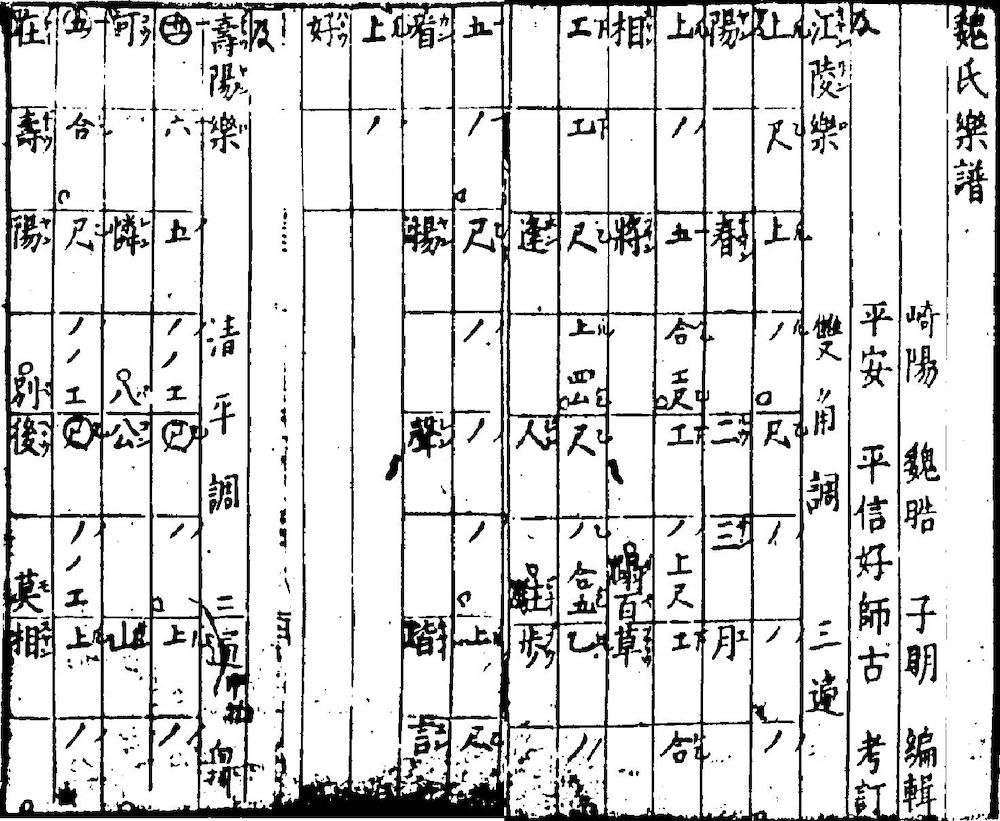Weishi yuepu 魏氏樂譜 "Master Wei's music scores" is a collection of music scores for palace entertainment compiled during the Qing period 清 (1644-1911) by music master Wei Hao 魏浩.
The book includes 50 tunes that are to be played to the text of songs from the Classic Shijing 詩經, Han period 漢 (206 BCE-220 CE) yuefu "music bureau" songs 漢樂府 or Tang- 唐 (618-907) and Song-period 宋 (960-1279) poems.
 |
Music of Nanjing (Jiangling yue 江陵樂), key shuangjue 雙角調, to play three times. The text begins with the words Yang chun er san yue 陽春二三月, while the tablature signs are in the boxes right to the words of the song. The grid-method is very uncommon, and difficult to read in practice. |
The collection consists of tunes that were once in the possession of the late Ming-period 明 (1368-1644) palace music master Wei Shuanghou 魏雙侯, courtesy name Zhiyan 之琰, who in 1644 fled to Nagasaki to escape the troubles after the downfall of the Ming dynasty. His fourth-generation descendant Wei Hao, courtesy name Ziming 子明, was a teacher of Chinese music at the Tokugawa court. At that time, this style of music was called "music from the Ming" (Mingaku 明樂, Chinese reading Mingyue). He selected the most essential tunes out of a collection of more than 200 pieces and had them printed in 1768. The collection includes a broad array of scores for various instruments, including wind instruments, plucked strings, drums and idiophones. For all tunes, Wei Hao added one of eight types of (a total of 28 types of) court banquet music tunes (yanyue gongdiao 燕樂宮調), namely daogong 道宮, xiaoshi diao 小石調, zhengping diao 正平調, Yuediao 越調, shuangjiao diao 雙角調, huangzhong diao 黃鐘羽, shuangdiao 雙調 and xianlü diao 仙呂調. These are called Mingaku hacchyō 明樂八調 (Chinese reading Mingyue badiao) by Japanese scholars. They correspond to the modes described by the Southern Song-period 南宋 (1127-1279) scholar Cai Yuanding 蔡元定, author of the Lülü xinshu 律呂新書, but have changed over time and do not necessarily correspond to the traditional old models.